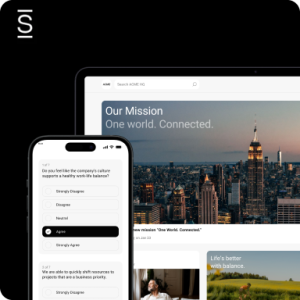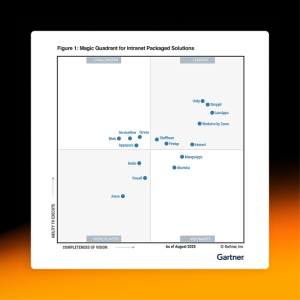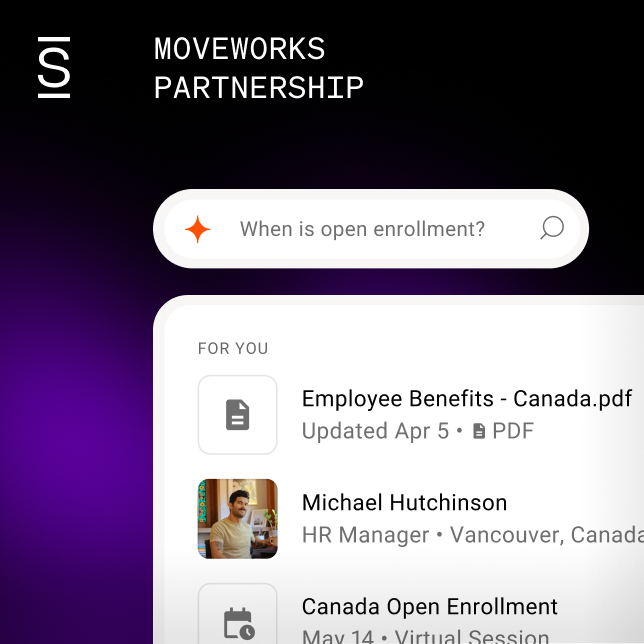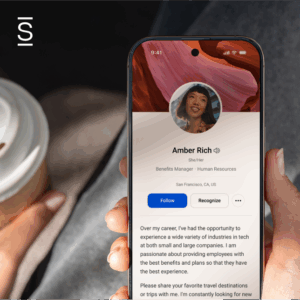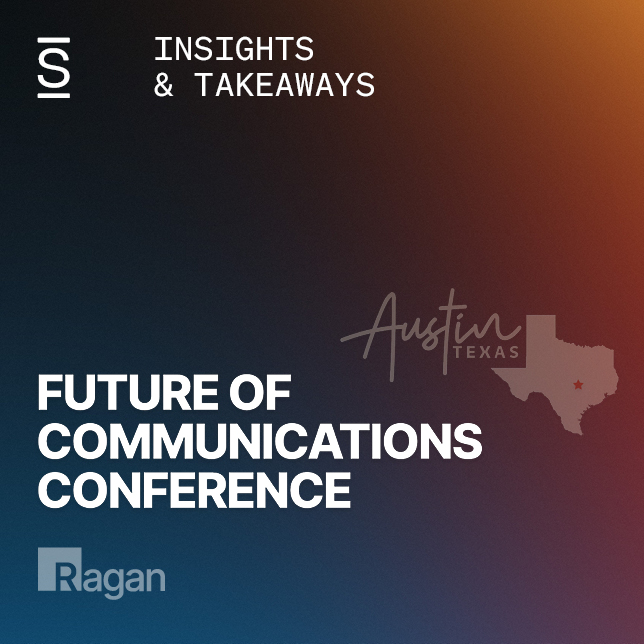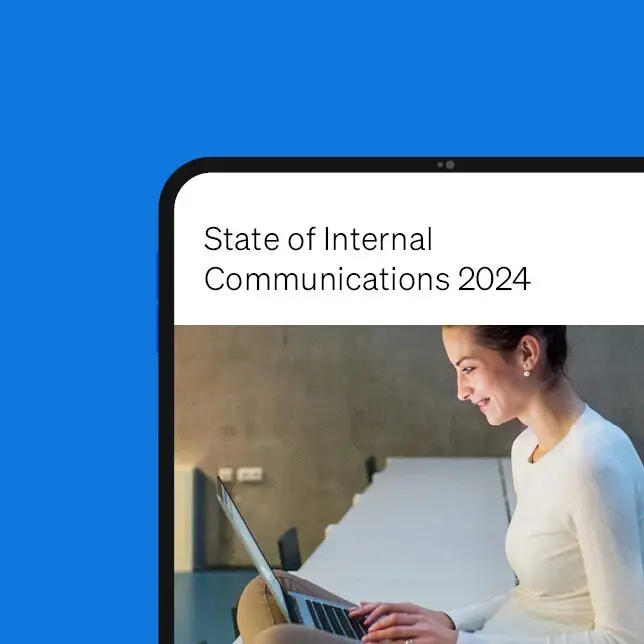In March 2020, many employees were sent home due to COVID-19. Two years later, reintegrating employees and teams after working from home for an extended period will be challenging for leaders and internal communications. Hundreds (or thousands) of employees may be coming back the same week. You also might have hundreds of employees hired during the pandemic and have never been to the office. Whether your employees are coming back full-time or in a hybrid work model, internal communications should prepare for the return to make the transition easier.
Here are some tips and best practices for leaders and internal communicators that will help with the transition, even if the employees are going back to the office part-time.
Take a step back and meet employees where they are.
The chances are that many of your employees are feeling burnt out from—everything! Countless events have made the last two years difficult and caused significant mental health challenges. In an article on Forbes.com, “Empathy Is The Most Important Leadership Skill According To Research,” Tracy Brower points out that empathy is an essential skill that helps drive better business results. It plays a significant role in “everything from innovation to retention.” Leaders need to recognize how employees feel and what they think as they prepare to come back.
Leaders also need to welcome employees back and communicate what the future will look like in terms of work-from-home versus coming to the office. Internal Comms will need to help leaders strategize on when and how to communicate. Many employees would prefer to continue working from home or have more flexibility in their work location and schedule. Work-life balance has become a top priority for us all.
Simpplr’s State of Employee Experience 2022 report shows that the majority of employees want more flexibility. You should note that 61 percent of employees said having the freedom to choose where to work and which days to go to the office are critical factors for the overall employee experience.
“Asked which aspects of employee experience were most important, compensation, benefits, and rewards came in first overall…Flexible working arrangements scores as the third-most important factor, which could be a reflection of the explosion in remote and hybrid work during the pandemic.”
Employees have shown that they can be productive at home. In fact, a study published through ChicagoBooth.edu stated just this.
Nicholas Bloom of Stanford, Steven J. Davis of Chicago Booth, and Jose Maria Barrero of the Mexico Autonomous Institute of Technology found that “On average, respondents’ productivity at home was seven percent higher than they expected. Forty percent of workers reported they were more productive at home during the pandemic than they had been when in the office, and only 15 percent said the opposite was true.”
The researchers argue that the work-from-home trend is here to stay. They calculate that these working arrangements will “increase overall worker productivity in the US by five percent as compared with the pre-pandemic economy.”
The argument of the non-productive remote worker is no longer valid. What needs to be approached and discussed is the issue of trust between management and the “agile” worker. Additionally, employees know this, and they expect more flexibility in where they work, even if that doesn’t mean 100% working-from-home.
If your company is bringing people back to the office 100% of the time, resorting to business as usual (pre-COVID) is no longer enough to give employees what they need to feel valued.
Prepare Before the Return
As you plan to welcome employees back, there are numerous in-the-office policies and logistics that employees will need to learn (or re-learn). How will you communicate this information? Ask yourself if the return will include a back-and-forth dialogue between leaders and employees, or will it simply be information dictated by leadership and pushed down. Will leaders prioritize the mental health challenges faced by employees?
Remember, while adjusting to hybrid models of working from home and in the office part-time, the employee experience is a top priority as we figure out how to increase employee engagement between staff working from home and the office.
When approaching this subject, I would recommend creating a communications strategy and timeline. With this in place, you can outline and orchestrate deliverables, audiences, timeline, key messages, channels, tactics, and measures of success.
Simply ask yourself, what would you want to know if you had to go back to the office after two years of working at home? Do you remember how to order office supplies or book a meeting room? You, too, may be returning to the office. So, putting yourself in their shoes will be easy!
Equally important is the attention paid to first-time employees hired during the pandemic who are coming to the office. They will need to know the same information. Office employees will undoubtedly have many questions about being in an in-person work environment. Here are some questions to expect:
- How do I get into the building, and where should I park?
- Where will I sit?
- Will my employee badge still work to get into the parking garage and give me access to the building?
- Can I use my badge to pay for food and snacks in the cafeteria?
- Will the cafeteria serve food when we go back to the office?
- Will I need to wear a mask in the office?
- Do I need to submit my vaccination card to come back?
- Where can I find office supplies?
- Will I still be able to work from home some of the time?
Many answers likely already exist in new hire packets. However, this information should be reviewed for accuracy, updated, and located where all employees can easily find it. Consider sending out a survey to employees that will allow you to collect questions they have about returning to the office.
Create a “welcome back to the office” site on your intranet. This site should be a one-stop-shop for all office-related information and policies. Many people might have forgotten office policies, contact information, the locations of office supplies and materials, how to book meeting rooms, desk assignments, in-person meeting protocols, sanitation and disinfecting, how to handle physical mail, recycling and routine desk waste disposal, copier machines codes, mask guidelines, new policies regarding flex time and remote working. IC should partner closely with HR to build this site.
People managers play a vital role in internal communications. Prepare presentation slides and talking points to help equip them with important information about events, policies, and logistics for returning to the office. Encourage people managers to schedule team off-sites and regular check-ins so that people can meet and get to know each other.
Return to the Office
What will the first week back look like? As you build the communications strategy and timeline, the first week will set the stage for how the transition will go. Most of your events should happen during the first week. Here are some ideas on how to welcome employees back:
- C-suite should schedule site visits to connect with employees face-to-face. They could welcome employees as they enter the office and give them a welcome back gift.
- Give every employee a welcome back gift or care package. Noise-canceling headphones, company swag like warm drink mugs, or food and beverage gift cards might help ease employees back into the office.
- The first day back in the office is a perfect time for a company all-hands meeting to welcome employees and set the stage for what’s ahead. One thing is sure, adding a Zoom meeting to invites will not make events successful in the hybrid environment — plan for a strategy that will engage employees no matter where they are located.
- Does your company have more than one office building or location? Maybe the company headquarters is in San Francisco, but you have offices in Austin, Chicago, and Boston. You could plan CEO site visits on different days. An alternative is you could ask executives to split up and attend events at locations on the same day.
- Create a special “Welcome Back” newsletter or email to drive traffic to the intranet page and list noteworthy events. As you collect data on how the transition back to the office is going, use this channel to address employee questions and concerns.
- Plan social and networking events to engage employees. Consider planning events that will get employees acquainted with each other. New employee meet-and-greet with c-suite leaders, employee free breakfast, mentorship program, or a community give-back day are great opportunities to engage employees.
Remember, the past two years have been difficult for many people. Empathy is key. Going back to the office is going to be a challenging transition. Internal communications should partner with employee benefits and HR to promote available mental and physical health initiatives and programs as it plays a vital role in enhancing the overall employee value proposition by demonstrating a commitment to employee well-being and fostering a supportive workplace culture. Highlight your company’s EAP benefits, lunchtime yoga, social events, and mindfulness activities. Remember: regular check-ins and communicating the importance of good health will help during these times.
Ongoing Communications
Many companies will continue a hybrid working environment. In consideration of this, internal communications should continually evaluate strategy, channels, and tools to meet the unique needs of all employees and strive to improve the employee experience.
IC needs better processes and technology for distributing and following up on communication while engaging all employees and ensuring they feel heard. Technology and strategy should foster workplace collaboration and social interaction, provide real-time analytics, and measure sentiment and comprehension. But what your employees want and need can be voiced by them.
Many workers want rich, personalized employment experiences. Through surveys and feedback, you can accomplish just that. Additionally, consider keeping connections, and encounters for remote employees live and meaningful. You can replicate the water cooler as a social gathering place using your internal comms platform. There are still conversations to be had.
Speaking of conversations, bringing in more leadership or peer-to-peer touchpoints in your employment journey is critical. The hyper-distributed work environment does not need to be so isolating with multi-directional communication. Utilizing the right efforts, your company can build social cohesion, creating a sense of connection and shared purpose. Explore technology to keep employees engaged, no matter where they work.
How can IC help employees connect in a hybrid world? What ways can we help improve the employee experience, no matter where they work? These are great questions. Create a remote employee resource group (ERG) where leaders can get best practices and input on the employee experience. Think of this group as a steering committee that you can call on when planning communication events.
Don’t forget to measure and evaluate your efforts on how employees are adjusting to the office. This data will help IC improve how messages are landing, if people are confused, if sentiment is poor, and if leaders need to change course. Overall, it will help evolve your communications plan.
Over the past two years, leadership has recognized the importance of internal communications. One of the “silver linings” of the pandemic has proved to leaders that companies can’t grow or even survive without a knowledgeable, engaged, and connected workforce.
Whether your employees are remote, hybrid, or back in the office, gone are the days when IC practitioners could sufficiently work with outdated technology and processes. If you still have them, they are preventing you from executing at a strategic level. The real value IC brings to the table is just starting to be realized. The transition back to the office will be a jumping-off point for your IC team to show leaders they need new ways of communicating and engaging with employees.


